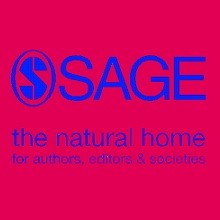
روشی بر مصاحبه پدیده شناسی
چکیده
در این مقاله من شیوهای از مصاحبه برای پژوهش پدیدهشناسی توصیفی ارائه میدهم که روشی نظری و روشن را به پژوهشگران نشان میدهد. روش من کاربرد پدیدهشناسی توصیفی بهعنوان شیوهای کلی پژوهش است و نه تمرکز صرف بر روی تحلیل دادهها. این روش پدیدهشناسی ساختاری در مصاحبه پرسشهایی راجع به درونمایه بافت تجربی، درک پدیده و وضوح آن را مطرح میکند. این نوع سؤالات پرسشهای ساختاری و توصیفی و همچنین استفاده نوین از تنوع تخیلی برای کشف پدیده را به کار میگیرد. این روش به پژوهشگران کمک میکند تا به درک چگونگی تقبل پژوهش مصاحبههای پدیدهشناسی توصیفی برسند.
در این مقاله من بهطور مفصل راجع به مصاحبه پدیدهشناسی صحبت خواهم کرد. روش من برخاسته از درک روش پدیدهشناسی است که در مصاحبه کیفی به کار میرود. از همان ابتدا توجه من به دیدگاه توصیفی پدیدهشناسی هوسرل (1970) بود و قصد جایگزینی روشهای فعلی را نداشتم اما میخواستم گزینهای دیگری را برای محققان فراهم کنم. ابتدا من به معرفی برخی مفاهیم مهم اساسی درروش مصاحبه میپردازم. در ادامه بهمرور مختصر منابع مصاحبه پدیدهشناسی خواهم پرداخت که ما را به سمت توضیح راهنمای مصاحبه پیشنهادی من میبرد. برای نشان دادن موارد استفادهاش نمونههایی از مطالعات من بر روی تجارب بیماران و پرستاران بخش اقماری همودیالیز در پی آن خواهد آمد (Bevan,2007).
نتیجه
روش مصاحبه پدیدهشناسی در این مقاله بهطور مفصل شرح داده شد که بر اساس تئوری پدیدهشناسی هوسرل (1970) شکلگرفته است. تمرکزش بیشتر بر توصیف دقیق و درون سازی تجربه با یک روش سیستماتیک است. این روش از درونمایههای زمینهسازی تجربه، درک پدیده و شفافسازی پدیده استفاده میکند. سؤالات نیازمند استفاده از پرسشهای توصیفی و ساختاری و استفاده نوین از متغیرهای تخیلی برای دقت توصیف است. پدیدهشناسی امری پیچیده است و روشهای تحقیقیاش نیز تنوع بسیاری دارند که متأسفانه منجر به ابهام و تیرگی و نقدهای روششناختی میشود. ساختار مصاحبه پیشنهادی من یک روش مبتنی بر تئوری و شفاف برای پژوهشگران بود. این روش کاربرد پدید شناسی را به عنوان یک روش کلی برای تحقیق فراهم میسازد که بهنوبهٔ خود شفافیت را به آن میافزاید و تنها مبتنی بر تحلیل دادهها نیست. این روش ترکیبی از تکنیکهای مصاحبه کیفی کلی و روشهای پدیدهشناسی است که روش جایگزینی را در مصاحبه پدیدهشناسی ارائه میدهد. هدفش فراهم کردن تأثیر پدیدهشناسی در مصاحبه است.
Abstract
In this article I propose a method of interviewing for descriptive phenomenological research that offers an explicit, theoretically based approach for researchers. My approach enables application of descriptive phenomenology as a total method for research, and not one just focused on data analysis. This structured phenomenological approach to interviewing applies questions based on themes of experience contextualization, apprehending the phenomenon and its clarification. The method of questioning employs descriptive and structural questioning as well as novel use of imaginative variation to explore experience. The approach will help researchers understand how to undertake descriptive phenomenological research interviews.
In this article I outline a guided approach to phenomenological interviewing. My approach was developed out of an understanding of phenomenological method applied to qualitative interviewing. From the outset I drew on the phenomenology of Husserl’s (1970) descriptive perspective, and am not intending to replace current methods but provide an alternative for phenomenological researchers. To begin, I introduce some important fundamental concepts of phenomenology essential to my interview approach. This is followed by a brief review of sources of phenomenological interviewing approaches, which leads to an explanation of my proposed interview guide. To demonstrate its use, examples are drawn from my study of patients’ and nurses’ experiences of hemodialysis satellite units (Bevan, 2007).
Conclusion
The approach to phenomenological interviewing outlined in this article is built on the phenomenological theory of Husserl (1970). Its focus is one of accurately describing and thematizing experience in a systematic way. It uses themes of contextualizing experience, apprehending the phenomenon, and clarification of the phenomenon. Questioning requires the use of descriptive and structural questions along with the novel use of imaginative variation for descriptive adequacy. Phenomenology is complex and its research approach has much variety, which unfortunately allows for obfuscation and methodological criticism. My proposed interview structure offers an explicit, theoretically based approach for researchers. It enables application of phenomenology as a total method for research, which in turn adds to clarity and is not focused only on data analysis. This method blends general qualitative interview techniques and phenomenological methods to provide an alternative approach to phenomenological interviewing. Its aim is to provide an explicitly phenomenological influence to interviewing.
چکیده
بهکارگیری ساختار پدیدهشناسی در فرایند مصاحبه
زمینهسازی
درک پدیده
شفافسازی پدیده
نتیجه
Abstract
Applying Phenomenological Structure to the Interview Process
Contextualization
Apprehending the Phenomenon
Clarifying the Phenomenon
Conclusion
- ترجمه فارسی مقاله با فرمت ورد (word) با قابلیت ویرایش، بدون آرم سایت ای ترجمه
- ترجمه فارسی مقاله با فرمت pdf، بدون آرم سایت ای ترجمه
